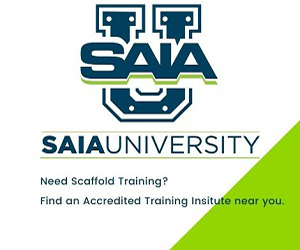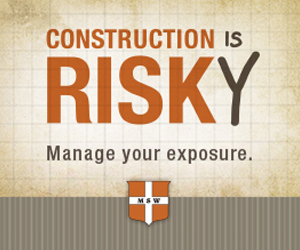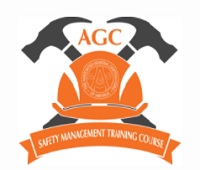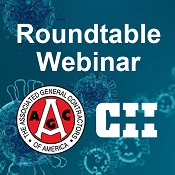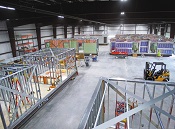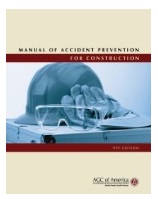 |
||||||||||||||||||||||||||||||||||||
| Archive | Subscribe | Safety and Health | Constructor Buyers' Guide | ||||||||||||||||||||||||||||||||||||
|
Top News
AGC’s Construction, Safety, Health & Environmental Conference, held virtually July 14-16, 2020, continued its tradition of providing a forum for safety, health and environment personnel to stay connected and learn from their peers and industry experts by delivering educational options for attendees through a mixture of plenary and breakout sessions which cover issues in three broad categories:
• Managing safety, health and environmental requirements and risk • Factoring safety, health and environmental concerns into phases of a project
• Expanding knowledge and skills
If you missed the live event, you can still view the complete lineup of sessions here and register here to catch the recordings.
In addition, save the dates for the 2021 conferences: • 2021 Construction Safety & Health Conference: January 13 – 15, 2021, in Glendale, AZ
• 2021 Construction Safety, Health & Environmental Conference: July 20 – 22, 2021, in Washington, D.C.
August 10-16
Safe + Sound Week is almost here! This year, Safe + Sound Week will be held from August 10-16, 2020. The week-long event encourages employers to highlight employee contributions to improving workplace safety and to launch new safety initiatives. Organizations or businesses of any size or in any industry looking for an opportunity to show their commitment to safety are welcome to participate.
The survey will close on August 24
The construction industry has experienced some very significant and sudden changes during the past few months that have led to dramatic changes in demand for work and the need for new workers. We need to understand exactly how those changes are impacting the industry’s current workforce needs to better be able to advocate for measures to help the industry’s labor needs in both the short- and long-term. That is why we are asking you to take a few minutes to complete the following workforce survey that we and our partners at Autodesk have prepared. The more people understand the scope, and consequences, of current labor market conditions, the more likely they are to enact measures to help meet the industry’s needs. The more members who take the survey, the better able we all will be to describe labor market conditions where you operate.
Review the CSEA Safety Management Best Practices
The AGC-Willis Towers Watson Construction Safety Excellence Awards (CSEA) recognizes those construction companies who excel at safety performance. The CSEA closely examines each candidate's commitment to safety and occupational health management and risk control. Unlike other safety award programs that limit the criteria to frequency rates, the CSEA selection process is considerably more comprehensive. Each application is reviewed for evidence of company management commitment, active employee participation, safety training, work site hazard identification and control, and safety program innovation. Over the past eight years, the finalist judges have produced the CSEA Safety Management Best Practices to share the highlights noted during the competition with the construction industry and any organization that places a high value on safety leadership. Please take the time to read through the Best Practices, which has many takeaways for contractors looking to strengthen their safety program and feel free to share it with others.
The AGC Diversity & Inclusion Excellence Awards recognize contractors that are champions in advancing diversity and inclusion within their workforce, subcontractor-partners, supply chain, the association, and in the communities they serve. The AGC Diverse Business of the Year competition honors an outstanding diverse AGC member-firm that is committed to achieving business success, while also contributing to the association and communities in which they work. In 2018, AGC of America celebrated 100 years of serving the construction industry. While we celebrated and recognized the past it is important that we continue to look to the future to address ongoing issues affecting the industry. In this spirit, AGC decided to make the Innovation Awards an annual award to incentivize and encourage free thinkers to provide pioneering solutions to industry challenges. Apply by Wednesday, October 21, 2020 for full consideration. Learn more about AGC of America's awards programs at www.agc.org/awards. Regulatory & Legislative Updates
FDA continues to find issues with certain hand sanitizer products. FDA test results show certain hand sanitizers have concerningly low levels of ethyl alcohol or isopropyl alcohol, which are active ingredients in hand sanitizer products. The agency urges consumers not to use these subpotent products and has expanded its list to include subpotent hand sanitizers, in addition to hand sanitizers that are or may be contaminated with methanol.
Federal workplace safety regulators say they hope to make information for employers on when to report COVID-19 hospitalizations “clearer” after the recent removal of guidance from an OSHA website. Deleted over the July 25-26 weekend were six frequently asked questions for when an employer must report to the Occupational Safety and Health Administration that a worker was hospitalized for COVID-19. The change may have been prompted by attorneys’ concerns that the guidance incorrectly interpreted OSHA’s rule requiring employers to inform the agency of a worker being hospitalized for an on-the-job injury or illness. Employers who fail to quickly notify OSHA face fines as high as $134,937 in cases of willful or repeat violations of the notification rule.
Events
Wednesday, August 26, 2:00 PM - 3:00 PM EDT
Stigma associated with mental health conditions runs high in the construction industry with high rates of suicide. But that’s changing as the industry tackles stigma by raising mental health awareness, engaging in creative campaigns & helping employees feel psychologically safe seeking treatment when it’s needed. Join us as leaders in this movement share the innovative ways they’ve busted stigma, engaged leaders and made a positive difference. Much can be learned from this work, which is especially important as our nation faces a surge in people experiencing mental health conditions.
Featured Speakers: Cal Beyer, Vice President, Workforce Risk & Worker Well-being; CSDZ, a Holmes Murphy Company
Leia Spoor, Senior Clinical Consultant, Holmes Murphy
According to the Bureau of Labor Statistics (BLS), from 2011 to 2015, the Census of Fatal Occupational Injuries (CFOI) reported 220 total crane-related deaths, an average of 44 per year over this 5-year period with 42% of the fatal work injuries taking place in the private construction industry. The data also shows that specialty contractors and heavy and civil engineering construction accounted for the most fatalities involving cranes in private construction. AGC of America is pleased to offer this one-day training program based on OSHA standards and best practices to answer the need for quality training within the industry.
September dates September 16 & 17, 2020 | 8:00 a.m. - 5:00 p.m. October dates October 14, 2020 | 8: 00 a.m. - 5:00 p.m. October 15, 2020 | 8:00 a.m. - 5:00 p.m. October 29 & 30, 2020 | 8:00 a.m. - 5:00 p.m.
October 5 – 7, 2020 | Cincinnati, OH
Standard Registration Rate: $995
The AGC Safety Management Training Course (SMTC) provides attendees three days of training on the basic skills needed to manage a company safety program in the construction industry. Held just a few times per year at select locations around the country, the SMTC program builds on focus four training and prepares attendees to manage key safety issues on the job site and provides techniques for delivering basic safety training to field personnel. Participants will receive intensive instruction and training that will allow them to return to their firms with readily applicable new skills to positively impact their company’s safety and health program.
On Wednesday, July 29, the Construction Industry Institute (CII) and the AGC of America brought together a panel with a range of perspectives. The webinar brought together two CII owners, two AGC members, and two representatives from the insurance industry to provide updates on a variety of industry topics:
• Employee safety (office and job site)
• Training • Social distancing • Supply chain issues •Safety issues •Risk management • Contracts The panel also took a look at best practices in COVID-19 collaboration between owners and contractors. Click here to learn more and access the webinar recording.
Member News
AGC members hear a cry for help and jump into action
COVID-19 caught the world off guard. But in a way, it’s as if the construction industry has been training for this moment. Rising trends like Lean, increased collaboration between design and construction, and modular pre-fabrication all apply well to the demands of this unusual moment. The industry had a number of the key tools and skills already in service and, just as important, had the will and the strength to stand up and make things happen. The need arose, and AGC members jumped in.
Safety Cabinet
This 9th edition manual contains information on a variety of safety topics and is designed to assist construction contractors in preventing accidents on their jobsites. Contains 43 chapters and topics covering: Personal Protection, First Aid, Fire Hazards and Prevention, Scaffolding, Steel Erection, Motor Vehicles, Pipelines, Boilers, Explosives, Road Building, Mobile Asphalt Plants and many more.
Best Practices
Just the mere mention of suicide can make people uncomfortable. Now imagine trying to have that uncomfortable conversation with coworkers. But the reality is that ignoring this topic will not make it go away. Creating a culture that supports your workers is vital to organizational success. Frankly speaking, no organization will run without its people.
Suicide rates were on the rise, even before the gigantic curveball named COVID-19 came and hit every workplace, neighborhood and family in the world. But one thing is certain, everyone has been hit differently, and everyone started in a different place mentally, emotionally, and physically before COVID-19 became a nebulous force of change, confusion and chaos.
In the workplace, there is an obligation to share relevant health and safety information that impacts the lives and livelihoods of employees. What topic is more important than that of mental health (for coping in uncertain times) and suicide prevention? In many industries, more workers are lost to suicide each year than are lost to on the job accidents or exposures.
Industry insights from a construction leader
Willis Towers Watson’s history with the construction industry stretches more than 50 years in North America. During that time, the company has been involved in some of the world’s most iconic projects and, for the last 30, has partnered with AGC of America on its Construction Safety Excellence Awards program. Earlier this year at the association’s annual convention in Las Vegas, Jeanie Clapp, Constructor’s editor-in chief, sat down with Bill Creedon, global head of construction, and Paul R. Becker, CPCU, ARM, director, global construction, to talk about the industry, its trends and the current challenges facing commercial contractors.
Every year, dozens of workers die and thousands more become ill while working in extreme heat or humid conditions. There are a range of heat illnesses and they can affect anyone, regardless of age or physical condition. OSHA's Heat Illness Prevention campaign, launched in 2011, educates employers and workers on the dangers of working in the heat. Through training sessions, outreach events, informational sessions, publications, social media messaging and media appearances, millions of workers and employers have learned how to protect workers from heat.
|
||||||||||||||||||||||||||||||||||||




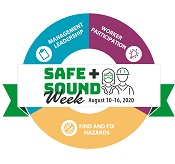

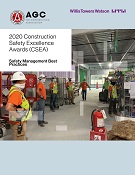
 AGC of America is proud to announce the launch of the 2021 AGC Awards competitions! The
AGC of America is proud to announce the launch of the 2021 AGC Awards competitions! The 
